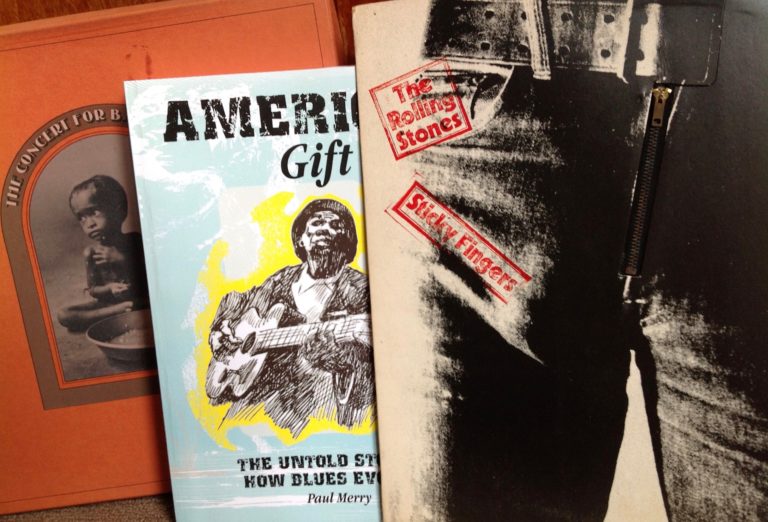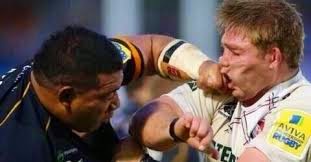Exquisite new British blues.
Introducing Pete Carroll: hiding his brilliance under a bushel for 37 years.
I heard an exquisite new blues track the other day. It’s ‘Going Down (Sell My Soul)’, written and performed by Pete Carroll, a talented composer, vocalist, guitarist and music producer. Based near Lanark, south of Glasgow, Pete deserves greater recognition, especially internationally, for his fabulous voice and electrifying blues guitar playing. Take a listen below. You won’t be disappointed.
Pete Carroll’s ‘Going Down (Sell My Soul)’ is about what people to do to gain fame and fortune inspired, by 1986’s ‘Crossroads’ movie. For those who remember, it was about a wannabe blues-guitar virtuoso seeking a legendary lost song by the 1930s American blues icon, Robert Johnson. I remember, like yesterday, watching the film many times with my two young sons who, like Pete Carroll, both grew up to become accomplished musicians.
Talking of Robert Johnson, a number of articles on the legendary blues performer can be found on these pages, including one about his English producer, a Londoner, would you believe, from the same neck of the woods as Miami Heat co-owner and former soccer star David Beckham.
https://www.paulmerryblues.com/reds-legend-david-beckham-and-blues/
But back to Scotland. I’ve promoted a few Scots bands in my time, from the Sensational Alex Harvey Band to Nazareth, both sensational hard rock units. I also worked closely with Average White Band offshoot Glencoe, with whom I followed to the offices of rock Svengali Miles Copeland in 1973. (Glencoe’s English duo, guitarist John Turnbull and bassist Norman Watt-Roy, later turned up with Ian Dury and the Blockheads). Wishbone Ash was our biggest act.
I worked with guitarist Rod Lynton who played on John Lennon’s ‘Imagine’ album. Our offices were in Dryden Chambers, a cul-de-sac off London’s Oxford Street, that no longer exists, its entrance now filled in with shopfronts. Such is progress. Miles Copeland’s brother, Stewart, worked down the corridor as a booker, and a nicer, friendlier guy you couldn’t wish to meet. Stewart later drummed for The Police, of course, with Miles managing them.
 As well as being influenced by the film ‘Crossroads’, Pete Carroll was massively inspired by 1978’s ‘The Buddy Holly Story’, which he saw on TV in 1985. The movie came on just as he was about to go out for the evening. ‘Maybe Baby’ was playing, stopping Pete in his tracks. “I didn’t go out that night, staying in mesmerised. Then I remembered I had an old acoustic guitar in the loft, given as a Christmas present when I was younger.”
As well as being influenced by the film ‘Crossroads’, Pete Carroll was massively inspired by 1978’s ‘The Buddy Holly Story’, which he saw on TV in 1985. The movie came on just as he was about to go out for the evening. ‘Maybe Baby’ was playing, stopping Pete in his tracks. “I didn’t go out that night, staying in mesmerised. Then I remembered I had an old acoustic guitar in the loft, given as a Christmas present when I was younger.”
“I was kicked in the ass by the universe,” says Pete on the effect the film had on him. (As another parallel, my younger son, too, was inspired by the same film, remaining a committed Buddy Holly fan to this day.)
What great guitarists do to learn their craft.
“The guitar didn’t have strings, so I cut up some gut fishing lines my dad had in his fishing bag, and somehow managed to put enough lengths of gut on the guitar. It sounded terrible but it worked, taking me to a basic level of guitar proficiency.
“I stayed in pretty much for a year, learning every Buddy Holly & The Crickets songs I could. A year later, I secured my first electric guitar and a homemade amp, learning more riffs, licks and songs from the 1950s, from the likes of Chuck Berry, Bill Haley, Gene Vincent, and more importantly, Eddie Cochran.

“That first electric guitar was seriously hard to play. The action was so high it needed a brick to hold down chords (Pete jokes) and my fingers bled for a year. This music was way before my time, but I connected to it, heart and soul. I then learnt songs and riffs from the 1960s: the Beatles, Stones, Shadows, then Hendrix, The Doors, Led Zeppelin, Allman Brothers, and many more.
“From then on, I learnt from any guitar-based music I could, including 1940s/1950s rhythm & blues, blues, and some years later, metal, rock and indie rock. Basically, I’ve listened to a lot of great music for nearly 40 years, music spanning 60 years. It’s all mushed up inside of me, coming out how it comes out. Take a listen below. Look for ‘Soul Man For Sale’ Pete’s new EP on Bandcamp
Guitar expertise in the bag, Pete Carroll formed the first of his bands around 1986, continuing as a lead guitarist for the next ten years, before writing songs and singing in his own indie rock trios.
A change in direction.
Making music is a precarious business, as you’ll know, and Pete obviously felt he needed a back-up plan. “In 1990, I went to college in Glasgow for three years, learning Sound & Music Production in the first year, inspired by the work of Norman Petty with Buddy Holly & the Crickets.
“Norman Petty, in my opinion, was a recording genius. All the pioneering accolades people give Buddy Holly actually derived from Petty’s knowledge of studio and sound. He had a brilliant studio in Clovis, New Mexico, where Buddy and the guys recorded their hits. Petty also recorded Roy Orbison, Buddy Knox, Jimmy Bowen, the Fireballs and, I think, Trini Lopez.
“I then spent a second year doing Music Tech & Management, before a final year studying Information & Media.” Back-up plan in place, from 1997 Pete forged a career for many years in IT Support, “kind of leaving the band scene”.
If I had a dollar for everyone I knew – famous or otherwise – who left the music industry needing to earn a decent crust, I’d be a rich man. But Pete hadn’t given up.
“In 2005, I got into home recording, using a DAW (Digital Audio Workstation) and used Cakewalk and Propellerhead Reason* to create my own music. I’ve been using Cakewalk to record my own songs and instrumentals and am currently using Cubase.”
*Propellerhead Reason, incidentally, closed down in 2014, after 15 years.
“An interest in sound recording goes back to my younger years with my radio cassette player. I taped songs off the radio, of course, but also recorded the local ice cream van’s chimes for a lark. After the van had driven off, I’d play the chimes back across the neighbourhood. It was fun to see people come out looking for a van that had left half an hour earlier.”
“Planning to record my first album back in 2007, I asked three vocalists who regularly backed Buddy Holly & the Crickets to sing on it – John Pickering from The Picks, and husband and wife, Gary & Ramona Tollett. That they all agreed left me speechless. Lovely people. Sadly it never happened. Life got in the way and John Pickering passed away.

“Then in 2011, Jerry Naylor, the Crickets’ front man during the early 1960s, asked me to join him on his ‘Rockabilly Legends’ UK tour. Jerry had heard my ‘The Crickets Sound Project’, featuring recording and guitar tutorials on YouTube.
https://www.youtube.com/channel/UCTXTiq1N1BoeiR8YSChrkMw
“Unfortunately, Naylor’s tour didn’t happen either, but he asked me again in 2013. Again, it never came to fruition. Since those early days, I’ve also signed about ten deals with music publishers in the USA, but nothing much ever came from that.” As mentioned early, the music industry is a frustratingly precarious business.
Today, Pete Carroll works as a self-produced songwriter, composer, music producer and guitarist, making his own music the way he wants to. He also composes for other British musicians and creates high-profile advertising campaigns for TV and online.
https://www.youtube.com/channel/UCiX5-S_kxrRLkBU3DmN6kDw
“My dream is to produce music in my own analogue hybrid studio with a DAW (digital audio workstation). I love the sound and warmth of the music recorded in the 1950s, 1960s and 1970s. Personally the best music, I think, was recorded in the 70s.
Pete’s blues influences.
Since this is basically a site devoted to blues and rock, I asked Pete for his main influences. First up, he cites Lonnie Johnson whose ‘Another Night To Cry’ is one of his all-time favourites. “It’s stunning,” he says.

Then there’s original soul sister, Sister Rosetta Tharpe. “An amazing talent. There should be a movie made about her.” Yes, there should. I’m amazed there isn’t.
Other influences include Buddy Guy, Jimmy Page, Jimi Hendrix, Mark Knopfler, Robert Cray, Robby Krieger of the Doors, the Allman Brothers, Doobie Brothers and Gary Moore, with whom I worked at CBS Records in London in the early 1970s, when Gary was in Skid Row.
Ex-Frank Zappa guitarist Steve Vai, the devil’s dazzling guitar player in the movie Crossroads, is another of Pete Carroll’s major influences, as is English guitarist Francis Dunnery, formerly of British progressive band It Bites. “Francis Dunnery’s guitar work is stunning,” says Pete.
“But, really, there are too many people to mention, as my guitar influences differ from my vocal and song-writing influences. Vocally, I’m inspired by Buddy Holly, Sam Cooke, Ray Charles, Jackie Wilson, southern soul, early rhythm & blues and gospel.
“I continue writing and recording daily, developing my mixing and mastering skills, and pursuing TV and film opportunities.
Returning to blues and blues-rock.
“My most recent batch of songs are influenced by blues and blues rock, as that’s the style I prefer to sing in. Soul, blues, country rock, blues-rock and so on – I guess that’s my natural demeanour in my vocal. I’m also back pursuing publishing again.
“I play enough piano to record, also bass and basic drums. I also study jazz guitar and love classical Iberian guitar. I have been playing guitar now for 37 years. But the fingers don’t bleed now.”







Very interesting Paul. I didn’t know you worked with the Dundonian band, The Average White Band. When I was managing the Royal Hotel in Dundee, Atlantic Records booked my hotel for the funeral wake of the drummer that died. They booked for thirty people, but after the funeral the hotel was swamped by over 300 fans. A hasty phone call to the US and Atlantic Records approved a free bar for everyone – we took in a fortune that day! Later that month, the band decided to play a free gig in the Royal Hotel, to say thank you to their Dundonian fans, what a night that was!
Good stuff, Keith. I didn’t actually work with the Average White Band but their offshoot, Glencoe. Glencoe didn’t make it big but, as you know, the AWB became enormous. Very good they were too.